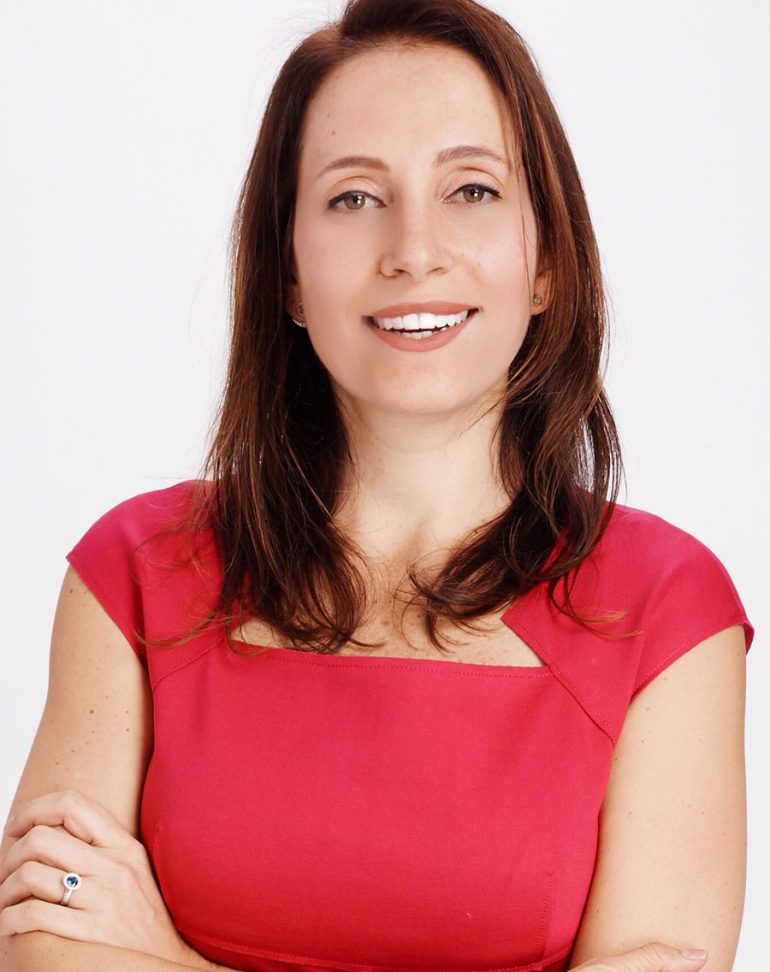Behind every brand delivering a great experience is a leader who recognizes the value of keeping things simple. In Simplifiers, Margaret Molloy, our Global CMO, interviews business leaders who put simplicity to work.
In this Simplifiers interview, Margaret speaks with Cynthia Kleinbaum, Head of Marketing—Everyday Living Business, Walmart eCommerce. Here, Cynthia discusses simplicity in the context of her roles at Nesquik, Gilt Groupe, BCG, and Bonobos.
MM: What role does simplicity play in delivering on brand promise in an organization?
CK: I’ll answer that in the context of my experience working at Nesquik. Nesquik stands for fun nutrition. It’s very easy for a brand like Nesquik to lose sight of its brand promise while trying to be everything to everyone. For example, Nesquik may consider adding more vitamins to please moms obsessed with nutrition, or flavors to please kids. However, making these additions contradicts their concept of fun nutrition. Every time a brand makes a decision, they must remember to stay simple and always build on their core brand promise. Simplicity keeps brands grounded.
MM: How have you seen an organization effectively create simple experiences?
CK: At Gilt Groupe, we had an obsession with making the customer experience easy and the path to checkout as fast as possible, which, in the context of a flash sales site, is even more important than on a regular e-commerce site. After doing extensive research on the purchasing funnel, the company invested in three key features on the product listing page: “Quick View,” “Add-to-cart” and “Buy Now”. We did this because we understood that not everyone needs to click on the product and read the entire product description before making a decision.
MM: What benefits have you observed companies experience from simplifying?
CK: In the immediate term, simplifying the customer experience enables higher conversion rates and, in the long run, it results in customers coming back more often, so better retention rates. Simplifying also allows companies to use resources more effectively—if you’re always working towards a small number of goals, and everyone is aligned on what success looks like, it’s easier to optimize your human and financial resources, enabling synergies.
MM: How do you strive to keep things simple for your marketing team?
CK: I use an approach I learned while working with technology and product organizations called stack ranking, through which the most impactful and least resource-intensive initiatives get prioritized. In the tech and product fields, they ask how much impact the business is going to derive from an initiative, how much it’s going to cost and how much time it’s going to take. It’s a methodology to calculate what people should be working on based on what’s going to drive the most value with the least amount of resources. I start with marketing’s shared goals that align with the company goals and, from there, decide on the big things we’re going to work on.
This is hard for early-stage companies because you don’t have a lot of resources or know what’s going to work. But precisely because of the resource constraints, is even more important to take a selective approach.
In the end, this objective approach gives us permission to say “no” to the million things that come up every day if the cost/benefit doesn’t justify doing them.
MM: How do you lead as a simplifier?
CK: I use an approach I learned during my time in management consulting, which is to start every project with a set of hypotheses as well as the one thing we will deliver when we finish the project, which is usually a summary slide that is just conceptual at that point. Then we whiteboard the story that would get us there and spend the rest of the time filling in the blanks. By following this methodology, we keep our efforts very focused. I have seen people starting with the first slide, not with the last, which leaves them in a situation where they keep adding on to the story and get lost.
Simplifying the customer experience enables higher conversion rates and better retention.
MM: What’s the most recent simple customer experience that inspired you personally?
CK: I really like the meditation app called 10% Happier. I’ve tried using meditation apps before, but I like 10% Happier because the product is built to make it simple to get to what I feel like doing at that point—either taking a course or practicing meditation. You can even do a one-minute meditation if that’s all the time you have. By making it easy for people to open the app and start, without doing research or jumping through hoops, they made it very easy for me to get hooked.
MM: What’s the biggest mistake brands make when trying to simplify?
CK: When it comes to fashion, a mistake brands make is trying to market all the products they design. Fashion brands launch a lot of products every season, and when marketers don’t focus on the ones they want to be known for and the ones that have a competitive edge, the result is a diluted brand message and confusion among the potential customers.
Customers, now more than ever, are moving towards brands that are experts in one product category—brands that do one thing exceptionally well, such as the sneaker brand Allbirds or the athletic wear brand Outdoor Voices. This doesn’t mean a brand cannot expand to new categories, it sometimes makes sense to do so in order to continue growing, but the marketing efforts don’t need to follow the same trajectory.
MM: Have you had to make a hard decision for the sake of simplicity?
CK: I make hard decisions for the sake of simplicity all the time.
For example, I often have to say no to initiatives that are only regionally relevant and not repeatable. I’d like to say yes to all of these initiatives and empower each retail location to be creative. But if I say yes to their requests, my team won’t have the time or financial resources to do those projects that will have a larger impact for the whole group and create a playbook for the future. We have to say no to one-offs, even if they’re interesting, so we can focus our resources on bigger, fewer and better initiatives.
MM: What’s the acid-test for simplicity?
CK: When you can explain your idea, no matter how big or small, in an elevator pitch, it’s clear that you have done your homework and are ready to “sell” it. If you can’t explain it in 30 seconds, you probably haven’t thought enough about it and it’s not ready for prime time.
MM: Thank you
Simplifiers is an ongoing series. See interviews with Founder and CEO at Tough Mudder, Will Dean; CMO at Deloitte, Diana O’Brien; CMO at Georgia-Pacific, Douwe Bergsma; CMO at Lenovo, David Roman; EVP – Chief Marketing and Communications Officer at Hewlett Packard Enterprise, Henry Gomez; CMO at Twitter, Leslie Berland; CMO at Blue Apron, Jared Cluff; SVP, Global Brand Management at American Express, Clayton Ruebensaal; EVP and Group President at Verizon Wireless, Ronan Dunne, Director of Strategy and Innovation at Cofra Holding Ltd, former CEO of C&A China, Lawrence Brenninkmeyer; CMO at The Recording Academy, Evan Greene; CMO at Mary Kay, Sheryl Adkins-Green; Head of Marketing at Home Centre, Rohit Singh Bhatia; SVP, CMO of Aflac, Gail Galuppo; SVP and CMO at Cambia Health Solutions, Carol Kruse, Managing Director of The Nature Conservancy, Geof Rochester, Chief Strategy and Innovation Officer of Motorola Solutions, Eduardo Conrado, EVP; SVP, Chief Marketing & External Affairs Officer at Abbott, Elaine Leavenworth, GE CMO, Linda Boff; McLaren Automotive Head of Brand Marketing, Stephen Lambert; Ascension Chief Marketing and Communications Officer, Nick Ragone; Hertz CMO, Matt Jauchius; Direct Line Group Marketing Director, Mark Evans; McDonald’s CMO, Deborah Wahl; Jet.com President, Liza Landsman and VP Marketing, Sumaiya Balbale; Target CMO, Jeff Jones; Spotify CMO, Seth Farbman; Ally Financial CMO, Andrea Riley; Gannett CMO, Andy Yost; CVS Health CMO, Norman De Greve; Dunkin’ Brands CMO, John Costello; Zappos CEO, Tony Hsieh; Southwest Airlines CMO, Kevin Krone; and Google CMO, Lorraine Twohill.
Know a Simplifier or would like to be included in the series? Please recommend an executive for my next interview: [email protected]
Margaret Molloy is global CMO and head of business development at Siegel+Gale. Follow her on Twitter: @MargaretMolloy


